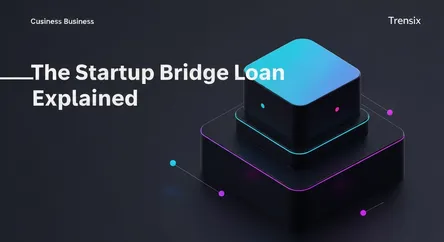Business
The Startup Bridge Loan Explained

Discover what a bridge loan is and why it's a crucial short-term financing tool for startups navigating gaps between major funding rounds. Learn how it works.
What is it?
A bridge loan is short-term financing that covers a startup's immediate cash needs until a larger, permanent funding round is secured. It "bridges the gap" between investment stages. Characterized by higher interest rates and shorter terms, these loans provide essential working capital for expenses like payroll and rent. This lifeline allows a company to maintain operations while finalizing a more substantial investment deal, preventing a potential shutdown due to a temporary lack of funds.
Why is it trending?
The trend of bridge loans is fueled by a tougher venture capital market. As investors become more cautious, funding rounds take longer to finalize, creating unexpected cash flow shortages for startups. A bridge loan provides a vital extension of the company's financial runway, giving them more time to secure their next major investment. In an uncertain economic climate, it has become a popular survival tactic for companies caught between funding stages.
How does it affect people?
For founders, a bridge loan keeps the business running but often comes with high costs and potential equity dilution. For employees, it means job security and continued paychecks. For investors, providing a bridge loan can protect their initial investment but also signals that the company is facing financial pressure. It introduces a critical, high-stakes financial instrument that impacts the valuation and future prospects for everyone involved with the startup.